Vitality is a person’s ability to live life with health, strength, and energy – and in the world of work it equates to high-performing, motivated, and healthy employees. That’s a key finding from the 2023 Vitality in America report, which is based on a survey of 10,000 adults conducted by Morning Consult and commissioned by The Cigna Group.

Vitality is a person’s ability to live life with health, strength, and energy – and in the world of work, it equates to high-performing, motivated, and healthy employees.
That’s a key finding from the 2023 Vitality in America report, which is based on a survey of 10,000 adults conducted by Morning Consult and commissioned by The Cigna Group.
“Workers with high vitality are more likely than those with low vitality to enjoy their work and pursue work tasks that interest them,” said Jill Vaslow, vice president of talent strategy and employee well-being at The Cigna Group. “They feel more capable at work, feel confident they can do their jobs well, feel energy and enthusiasm at work, and feel alive and vital at work. They also are more likely to perform well on the job.”
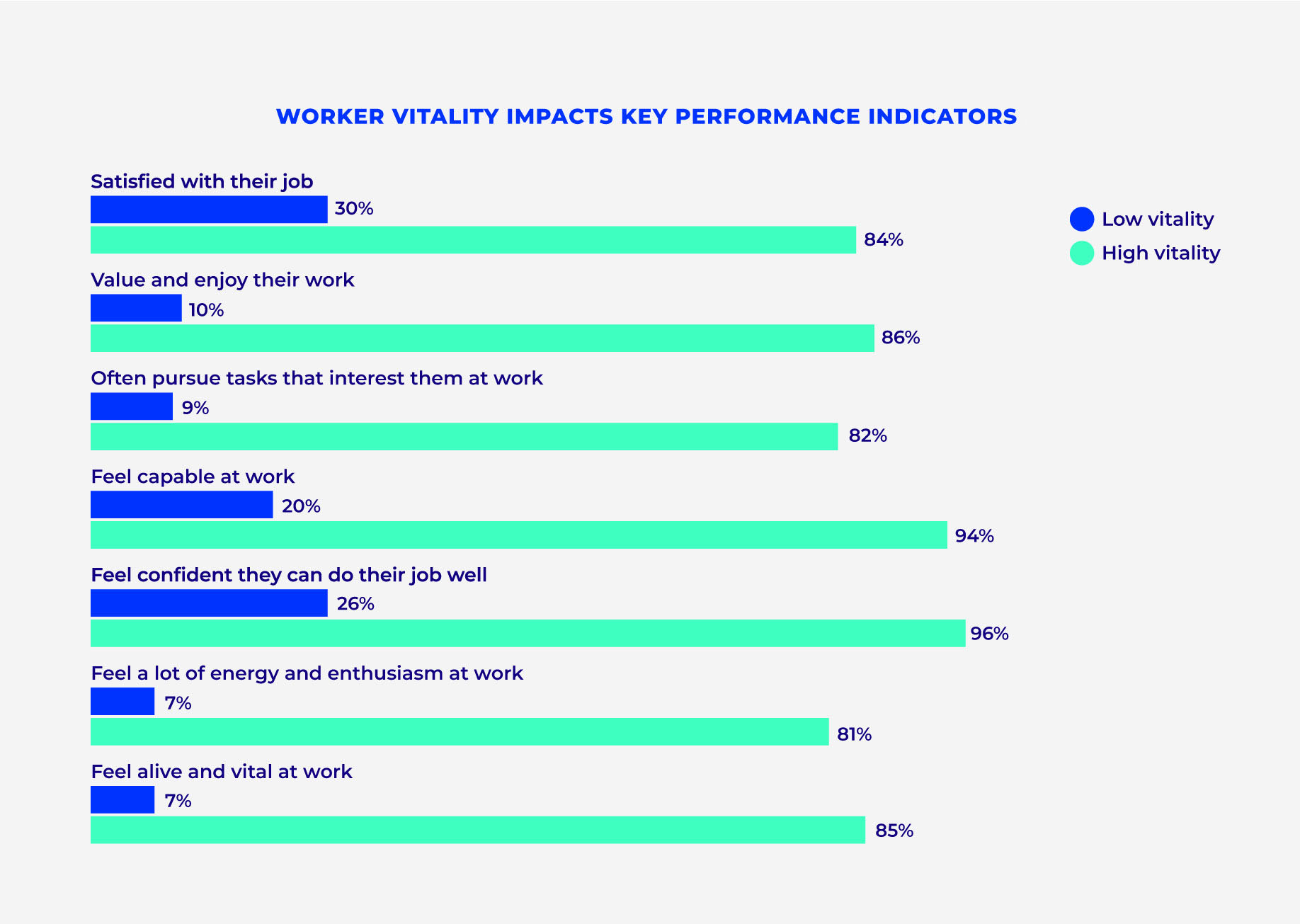
Let’s look at some of the findings from the 2023 study, and some key insights for employers.
Workers with high vitality are more likely to perform well at work
People with high vitality are more likely than those with low vitality to experience growth opportunities at work, with 31% receiving a pay raise due to merit, 18% being offered a promotion, and 38% receiving recognition for achievement at work. They are also more enthusiastic about their work and the organization they work for and are more willing to work harder to help their workplace succeed, highlighting their value and the importance of retaining them.
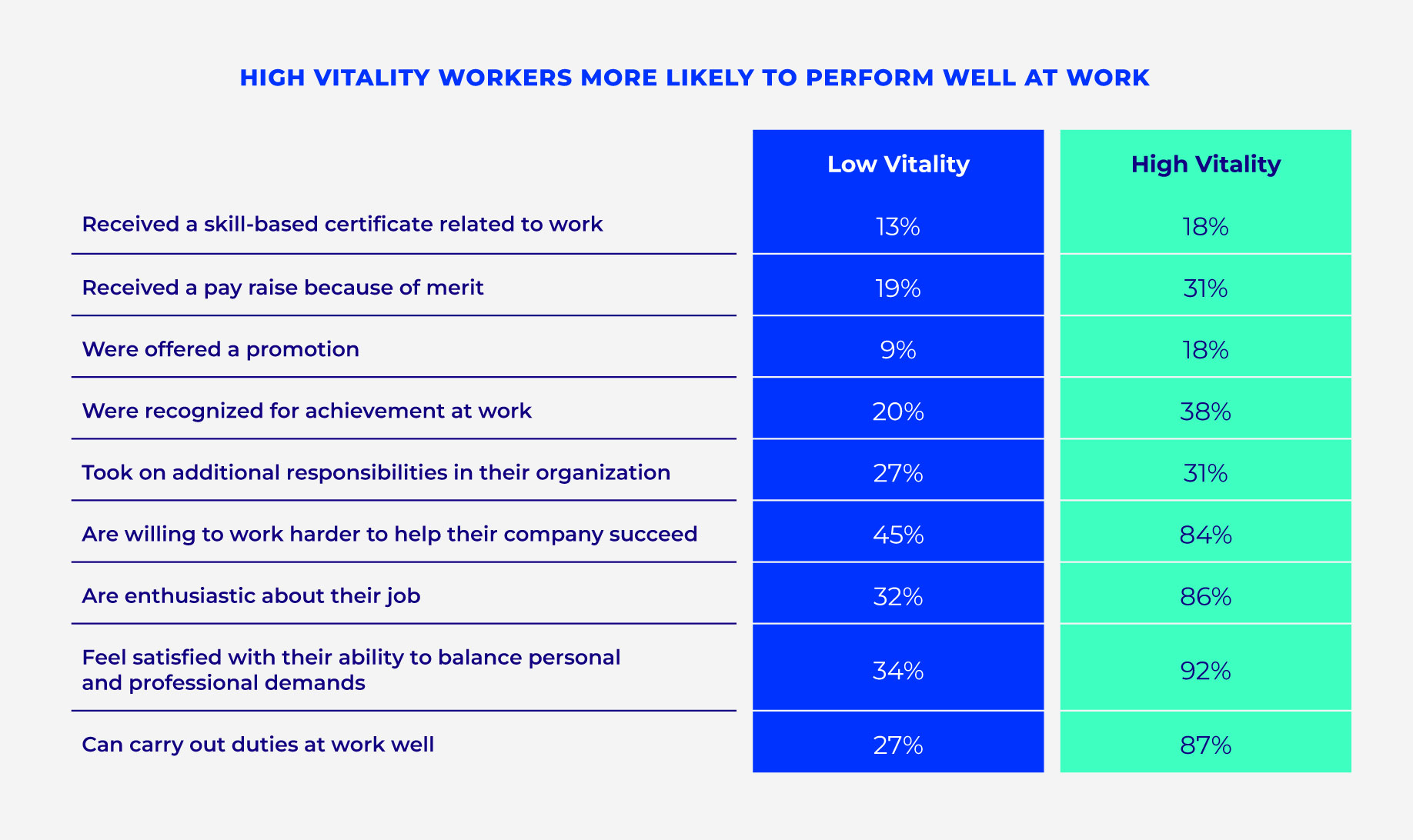
The research also found that high vitality might not always equate to high retention. Roughly 2 in 5 working adults indicate they are very likely or likely to consider looking for a new job in the next year. This is true for workers with low and high vitality, despite differences in job satisfaction. In fact, those with high vitality are significantly more likely to say they are very likely to make a genuine effort to find a new job in the next year compared with low vitality workers.
Tips: These findings demonstrate that employee recognition correlates with high vitality. Employers may benefit from strategies and programs that empower their people to thrive. A well-thought out, robust employee recognition program can not only increase employee engagement, it can also help retain employees and build loyalty.
Work culture plays an important role in vitality
Nearly 4 in 10 working adults report working in an environment that is supportive of their family and personal commitments. That’s true of 68% workers with high vitality, but only 16% of workers with low vitality say the same. In addition, 30% of all workers – and 58% of those with high vitality – say their employer shows a focus on health and wellness in its actions and communications, but only 10% of workers with low vitality agree.
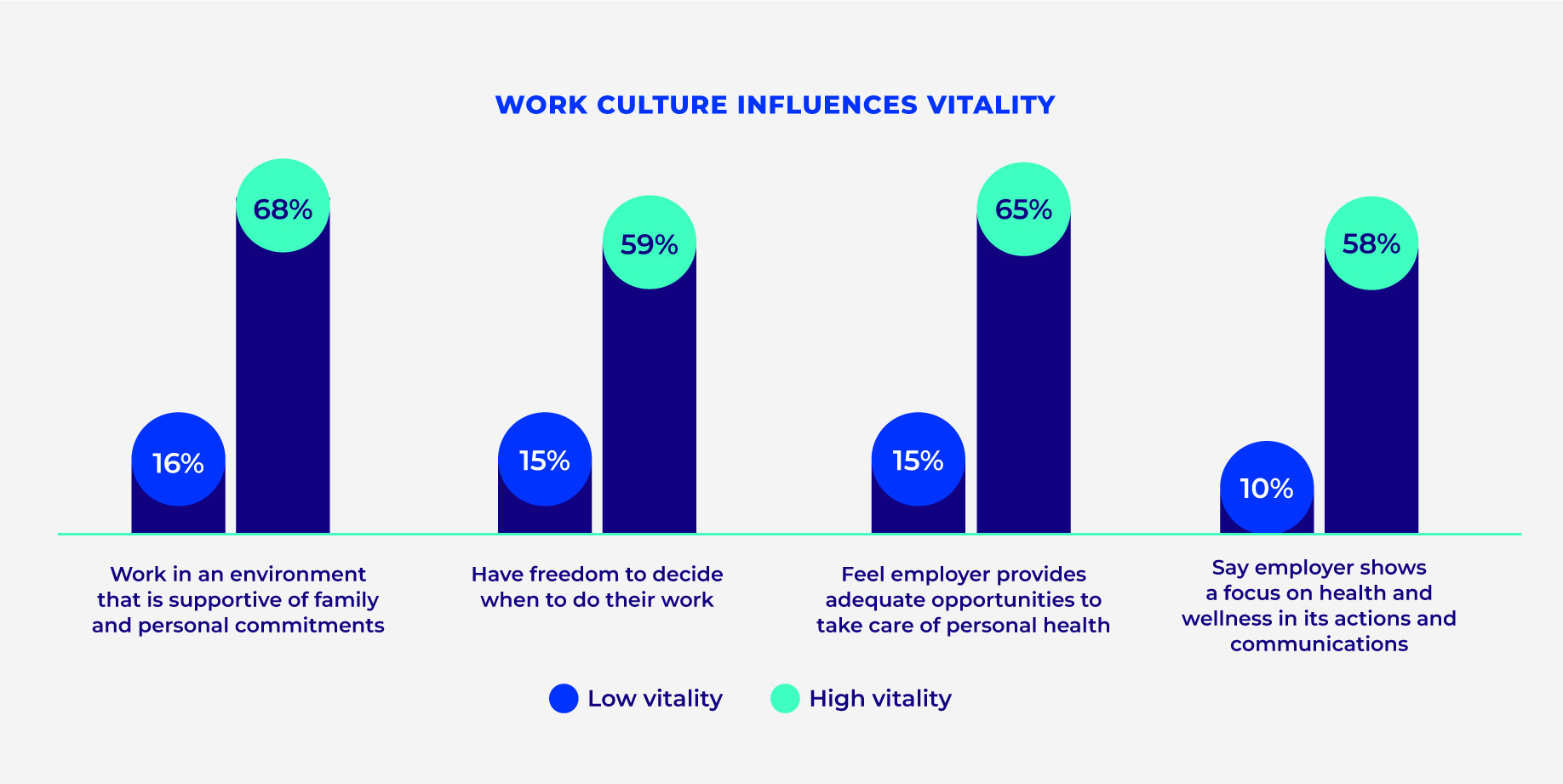
In addition, workers with high vitality also report stronger relationships with their managers and are more likely to say their manager provides them choices and options, understands them, and conveys confidence in their ability to do good work.
Tips: The actions of your leaders are reflected in the vitality of your workforce. Training and development for people managers is key. Today’s leaders need to be mentors, sponsors, and coaches, and these aren’t skills that come naturally to everyone. But the good news is they can be developed.
Some employees may quickly see the value of returning to the office or the hybrid work environment
According to the research, satisfied workers have higher vitality than those who are dissatisfied with their jobs. Those who work in-person or in hybrid work environments have higher vitality and are more satisfied with their jobs than those who are fully remote.
Hybrid workers also report healthier habits than remote workers, which results in better mental and physical health, greater levels of exercise, and at least one hour a day spent outdoors. Finances, work, and family or social relationships were cited as the top stressors for workers, whether they were in-person, hybrid, or fully remote.
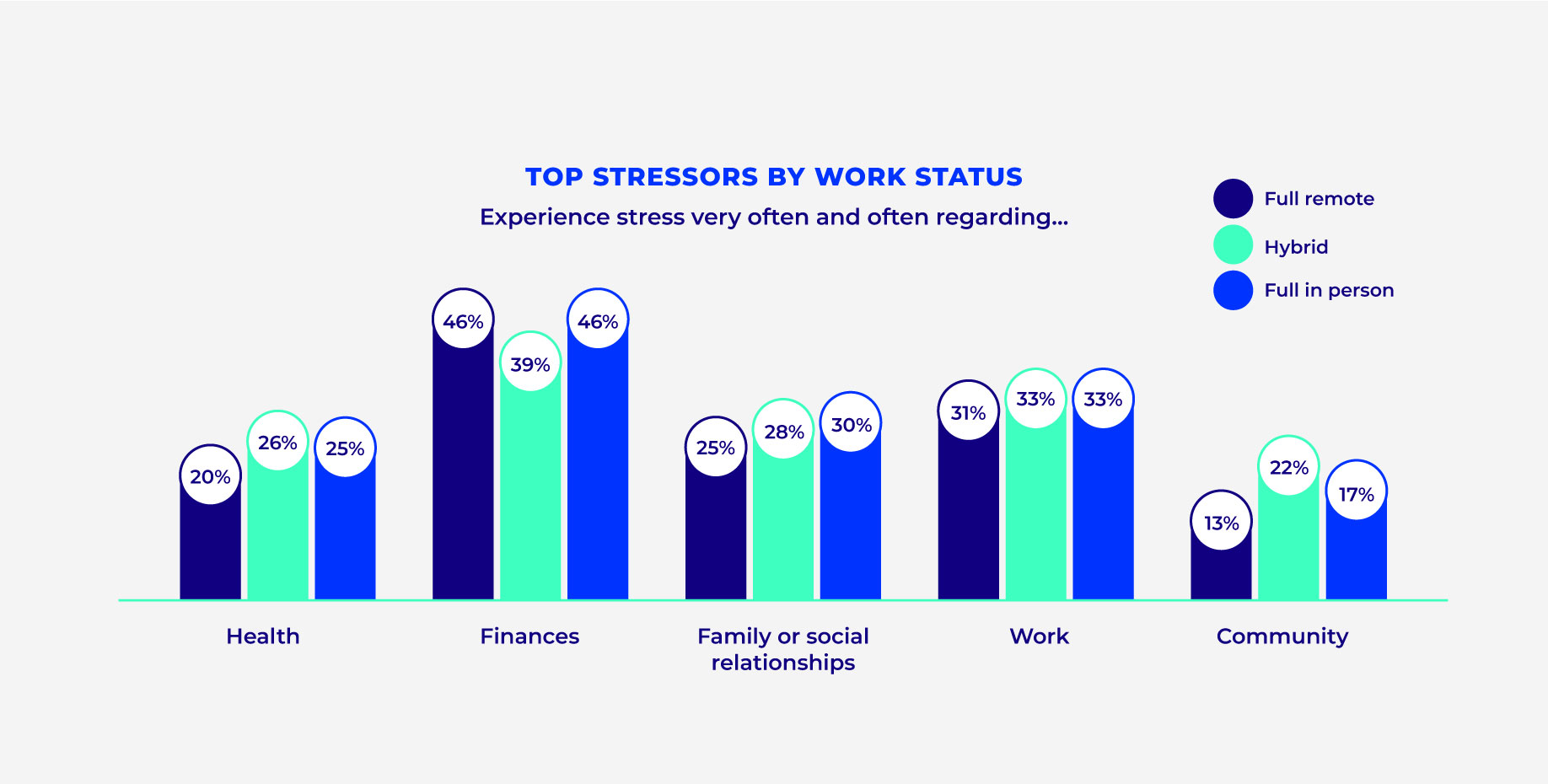
Tips: With many companies requiring employees to come into the office, a robust employee experience is key. Employers must be thinking about ways to foster connection, collaboration, and creativity while improving team morale. Make the return to office worth it.
Workers with high vitality used their health benefits more frequently
Benefits are important, too. Overall, workers are satisfied with their benefits, but those with high vitality are more satisfied and more engaged with their benefits. Given that people who are struggling with their vitality have higher levels of stress and greater mental health care needs, they would likely benefit from more engagement in their health. Our research indicates that employers could realize advantages from strategies aimed at improving benefit utilization among their entire workforce, with a particular focus on individuals with low vitality.
Given the greater utilization of benefits among workers with high vitality, it’s unsurprising that they also exhibit higher health insurance literacy.
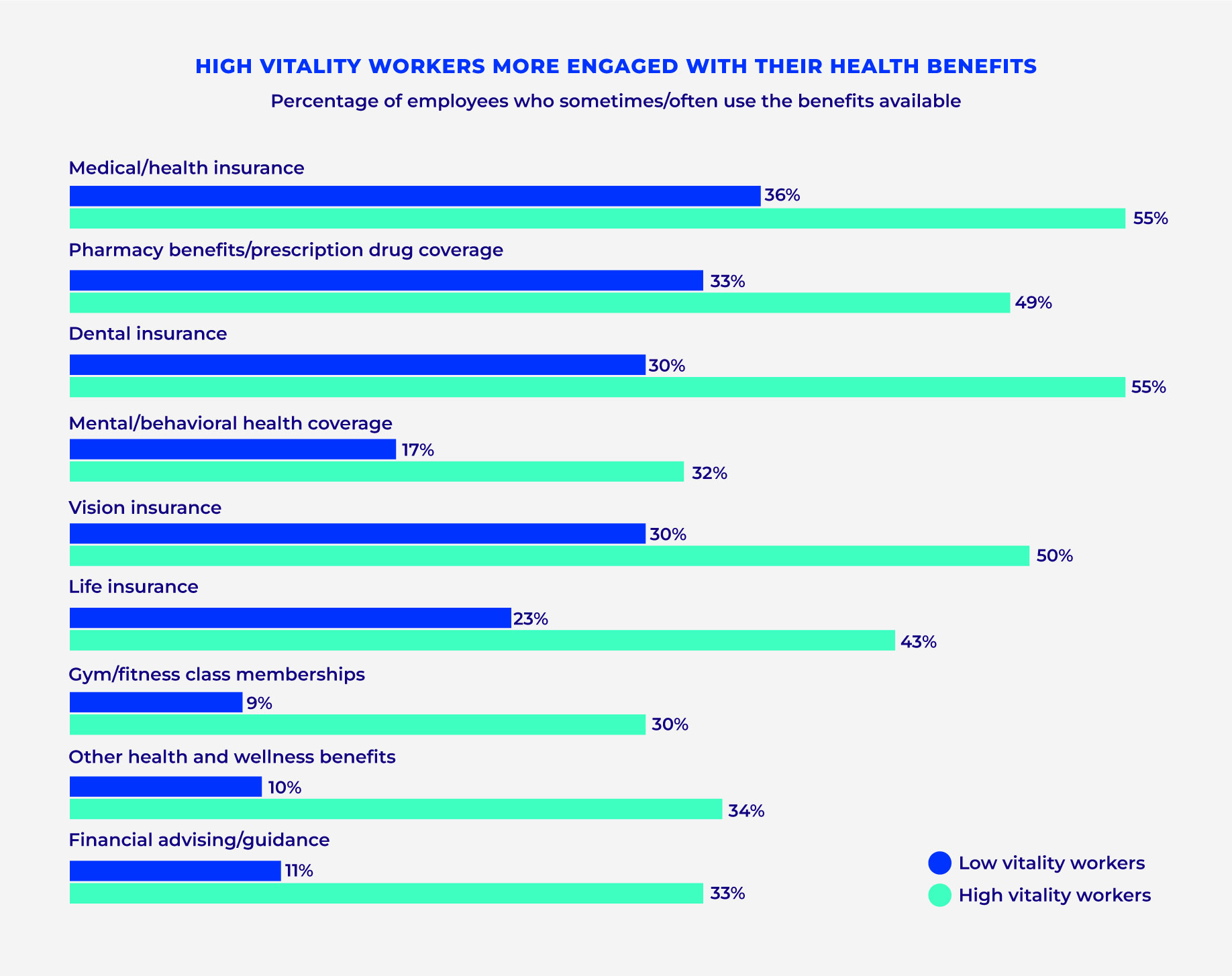
Tips: Benefit utilization correlates to higher vitality and suggests that high vitality individuals prioritize their health and well-being. A healthy workforce is good for business, and employers will see value in consistent communication about benefits, regularly asking for feedback and making it as easy as possible to locate resources. Additionally, employers may benefit from strategies that look at building awareness of underutilized benefits and programs.
Gen Z workers experiencing a disconnect between career expectations and the reality of their job
Members of Gen Z, who are just starting out in their professions, are underenthused by their work. They are most commonly working in retail, health care, and hospitality – industries that tend to require in-person work.
Of all generations represented in the workforce, Gen Z is the least satisfied with their salaries, the benefits provided, and their chances for advancement, and are less likely to feel a sense of meaning or purpose in their job. They are also less likely to feel they have autonomy at work, that their work has meaning, or that their job/organization is making a positive difference. Nearly half feel burned out in their jobs, and the majority have plans to look for a new job.
As these insights suggest, this cohort feels less capable and less confident in their ability to do their job well than other generations. But they aren’t giving up: Gen Z places a higher priority than older generations on developing their skills and gaining expertise, learning new skills, and earning professional certifications and degrees – something employers should note.
Tips: Gen Z craves opportunities for growth and development, and connecting them to training opportunities is a win-win for workers and employers. It builds upward mobility for Gen Z workers and helps them value their employer. To motivate employees to make time for learning and development, companies must celebrate learning-based achievement.
Money is top of mind for Gen Z
Gen Z’s top professional goal for the next five years is to make more money, which is consistent across vitality levels. Outside of salary,Gen Z’s top considerations when looking for a job include flexibility of work hours, feeling a sense of meaning/purpose, and chances for advancement.
In addition to facing financial stress, younger adults often lack resilience and struggle with loneliness, which impacts their vitality and their mental health. While they want to build financial security, they also want to feel more connected with others and play a role in improving their communities. Work can be a place to do this.
Tips: The research suggests that helping Gen Z find ways to do meaningful work could help improve their vitality. Helping younger workers better connect to your organization's purpose has never been more important. Employers should help people understand how their everyday tasks tie back to the larger organizational purpose. This can be achieved through consistent and authentic messaging that supports empathy, promotes positive feedback and recognition, and prioritizes compassion.
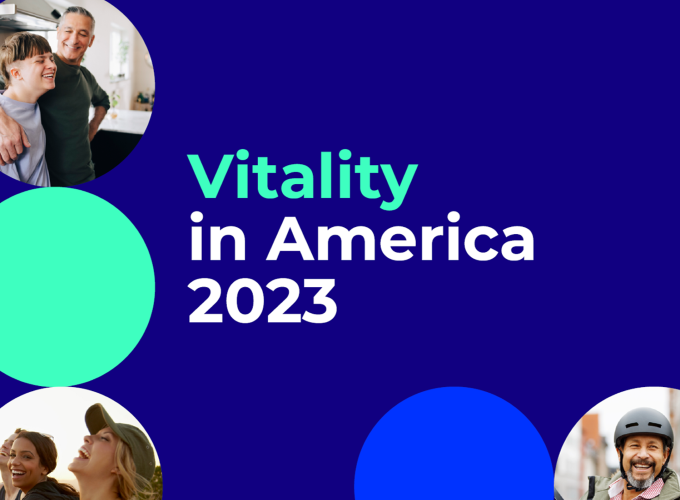
Vitality in America 2023
Let’s take a closer look at this year’s research, which gives insight into how individuals can improve their health, well-being, and vitality, as well as how employers can help their workforces do the same.